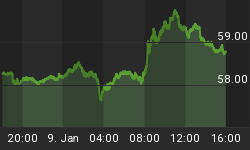If no one seems to care that the Titanic is filling with water, why not drill another hole in it? That seems to be the M.O. of the Bernanke Federal Reserve. After the announcement of QE3 (also dubbed "QE Infinity") created yet another round of media chatter about a recovery, the Fed's Open Market Committee has decided to push infinity a little bit further. The latest move involves the rolling over of long-term Treasuries purchased as part of Operation Twist, thereby more than doubling QE3 to a monthly influx of $85 billion in phony money starting in December. I call it "QE3 Plus" - now with more inflation!
Inflation By Any Other Name
In case you've lost track of all the different ways the Fed has connived to distort the economy, here's a refresher on Operation Twist: the Fed sells Treasury notes with maturity dates of three years or less, and uses the cash to buy long-term Treasury bonds. This "twisting" of its portfolio is supposed to bring down long-term interest rates to make the US economy appear stronger and inflation appear lower than is actually the case.
The Fed claims operation twist is inflation-neutral as the size of its balance sheet remains constant. However, the process continues to send false signals to market participants, who can now borrow more cheaply to fund long-term projects for which there is no legitimate support. I said it last year when Operation Twist was announced, and I'll continue to say it: low interests rates are part of the problem, not the solution.
Interventions Are Never Neutral
Just as the Fed used its interest-rate-fixing power to make dot-coms and then housing appear to be viable long-term investments, they are now using QE3 Plus to conceal the fiscal cliff facing the US government in the near future.
As the Fed extends the average maturity of its portfolio, it is locking in the inflation created in the wake of the '08 credit crisis. Back then, we were promised that the Fed would unwind this new cash infusion when the time was right. Longer maturities lower the quality and liquidity of the Fed's balance sheet, making the promised "soft landing" that much harder to achieve.
The Fed cannot keep printing indefinitely without consumer prices going wild. In many ways, this has already begun. Take a look at the gas pump or the cost of a hamburger. If the Fed ever hopes to control these prices, the day will inevitably come when the Fed needs to sell its portfolio of long-term bonds. While short-term paper can be easily sold or even allowed to mature even in tough economic conditions, long-term bonds will have to be sold at a steep discount, which will have devastating effects across the yield curve.
It won't be an even trade of slightly lower interest rates now for slightly higher rates in the future. Meanwhile, in the intervening time, the government and private sectors will have made a bunch of additional wasteful spending. When are Bernanke & Co. going to decide is the right time to prove that the United States is fundamentally insolvent? Clearly this plan lays down an even stronger incentive to continue suppressing interest rates until a mega-crisis forces their hands.
Also, when interest rates rise - the increase made even sharper by the Fed's selling - the Fed will incur huge losses on its portfolio, which, thanks to a new federal law, will become a direct obligation of the US Treasury, i.e. you, the taxpayer!
Of course, the Fed refuses to accept this reality. Even though a painful correction is necessary, nobody in power wants it to happen while they're in the driver's seat. So Bernanke will stick with his well-rehearsed lines: the money will flow until there is "substantial improvement" in unemployment.
Does Bernanke Even Believe It?
Even Bernanke must have a hunch that there isn't going to be any "substantial improvement" in the near term. I suggested before QE3 was announced that a new round of stimulus might be Bernanke's way of securing his job, but recent speculation is that he may step down when his current term as Fed Chairman expires. Perhaps he is cleverer than I thought. He'll be leaving a brick on the accelerator of an economy careening towards a fiscal cliff, and bailing before it goes over the edge. Whoever takes his place will have to pick up the pieces and accept the blame for the crisis that Bernanke and his predecessor inflamed.
Don't Gamble Your Savings on Politics
For investors looking to find a safe haven for their money, QE3 Plus is a strong signal that the price of gold and silver are a long way from their peaks. Gold hit an eleven-month high at the beginning of October after the announcement of QE3, but the response to the Fed's latest meeting was lackluster. When the Fed officially announces its commitment to QE3 Plus in December, I wouldn't be surprised to see a much bigger rally. For that matter, many are keeping an eye on the election outcome before making a move on precious metals.
However, seasoned readers of my commentary know that short-term trends are not a good reason to invest in physical precious metals. QE3 Plus can only boost the confidence of anyone intent on the long-term protection of wealth through hard assets. No matter who takes office in January, Helicopter Ben Bernanke will continue on the path of dollar devaluation until there is a flight of confidence from the dollar.
Click here for a free subscription to Peter Schiff's Gold Letter, a monthly newsletter featuring the latest gold and silver market analysis from Peter Schiff, Casey Research, and other leading experts.















